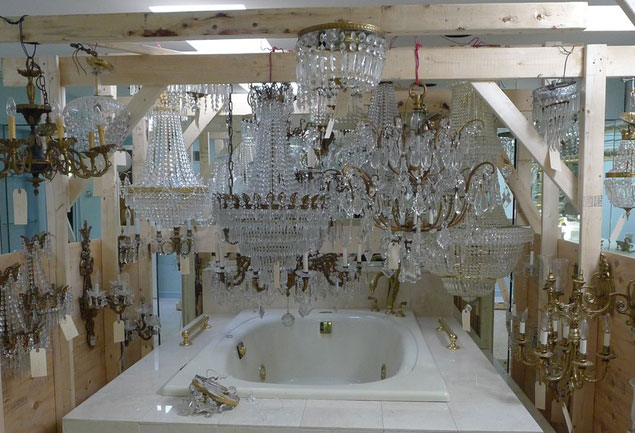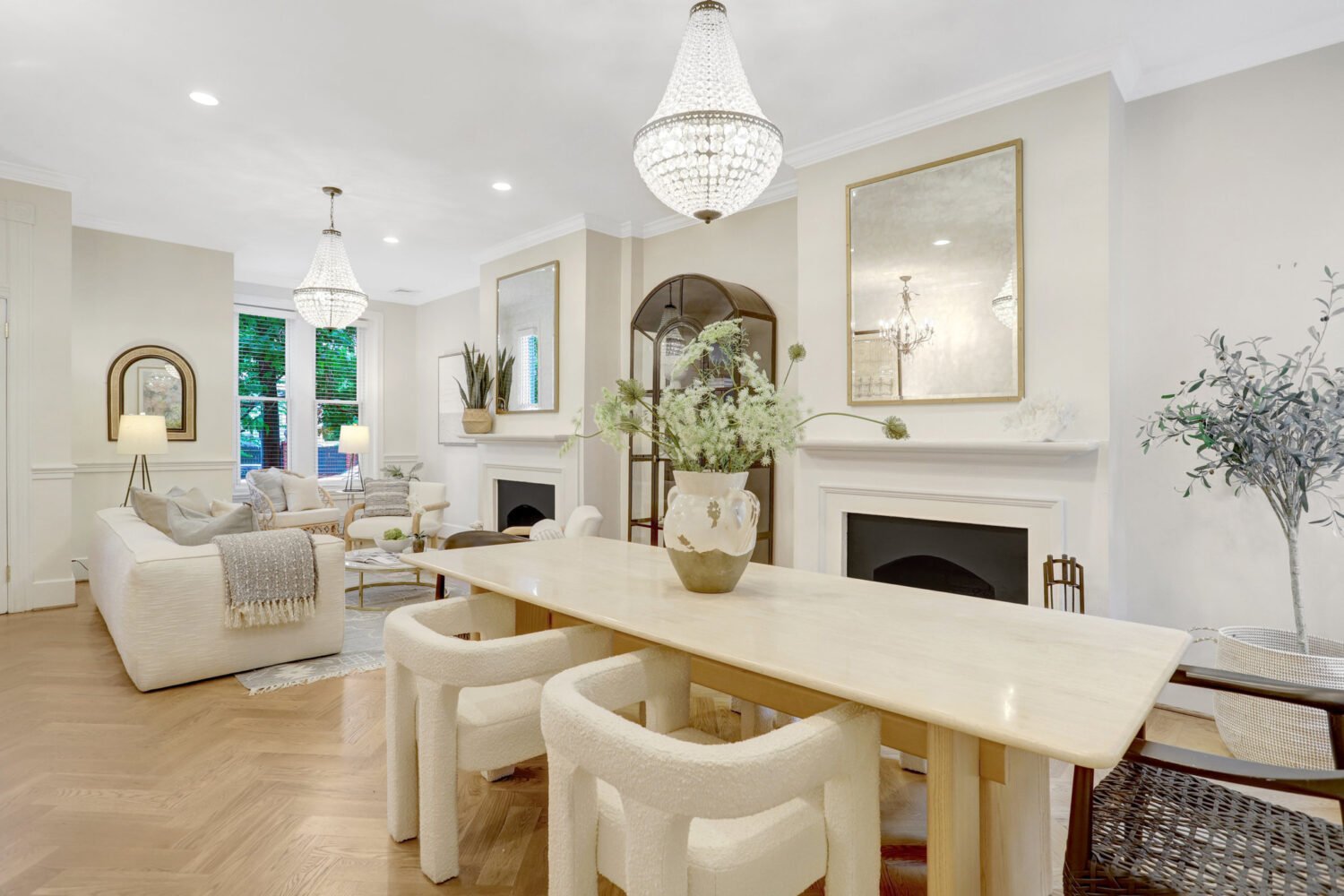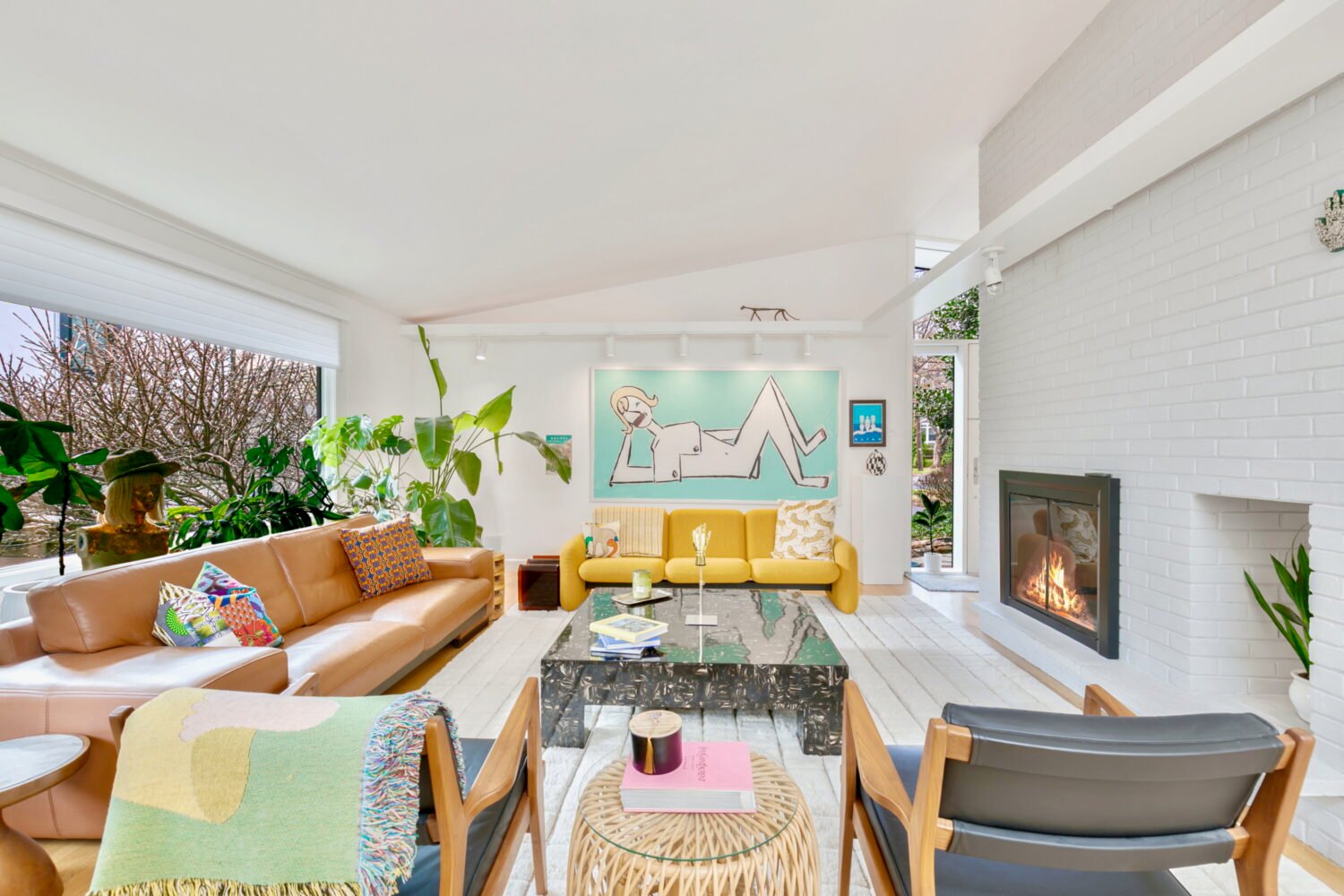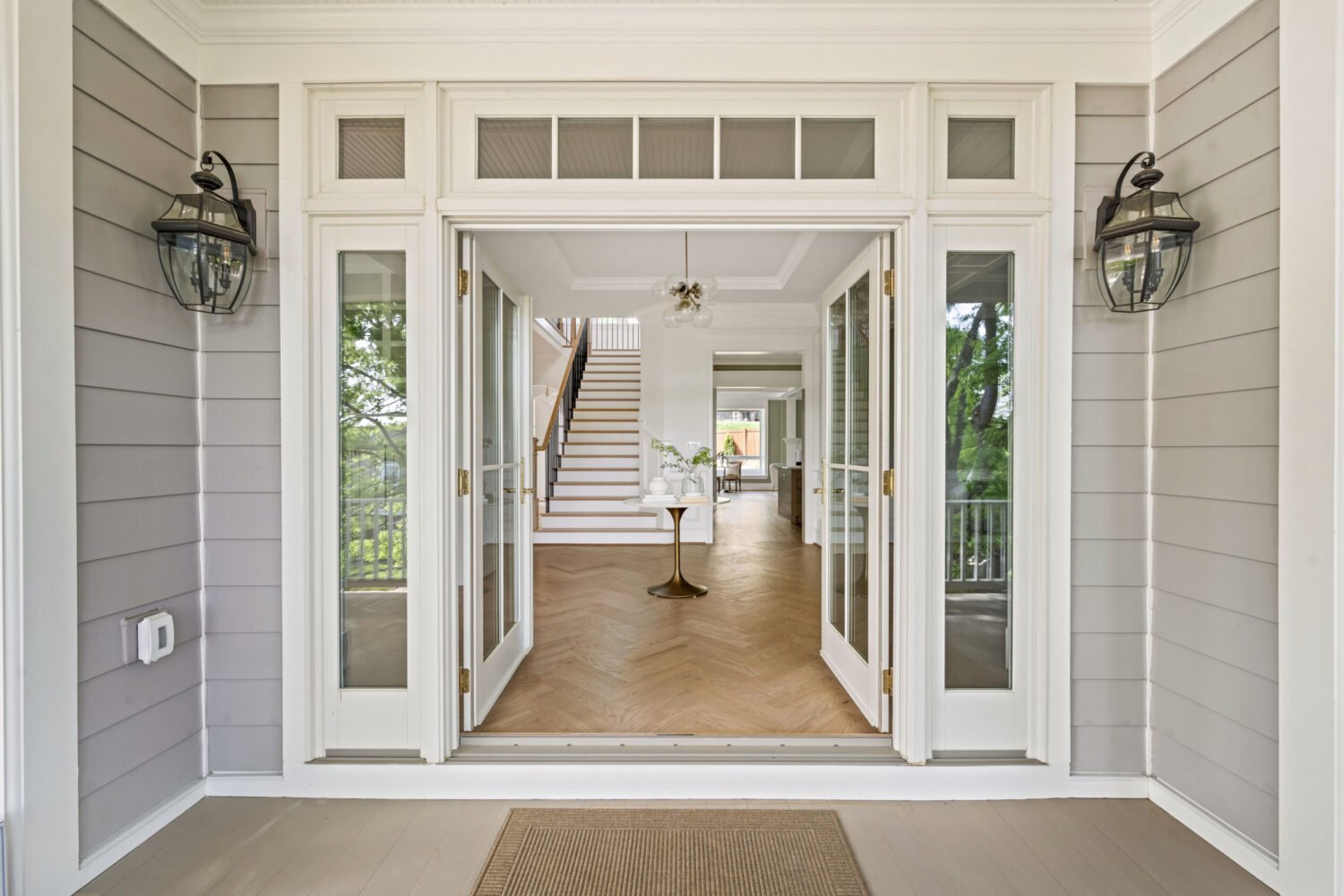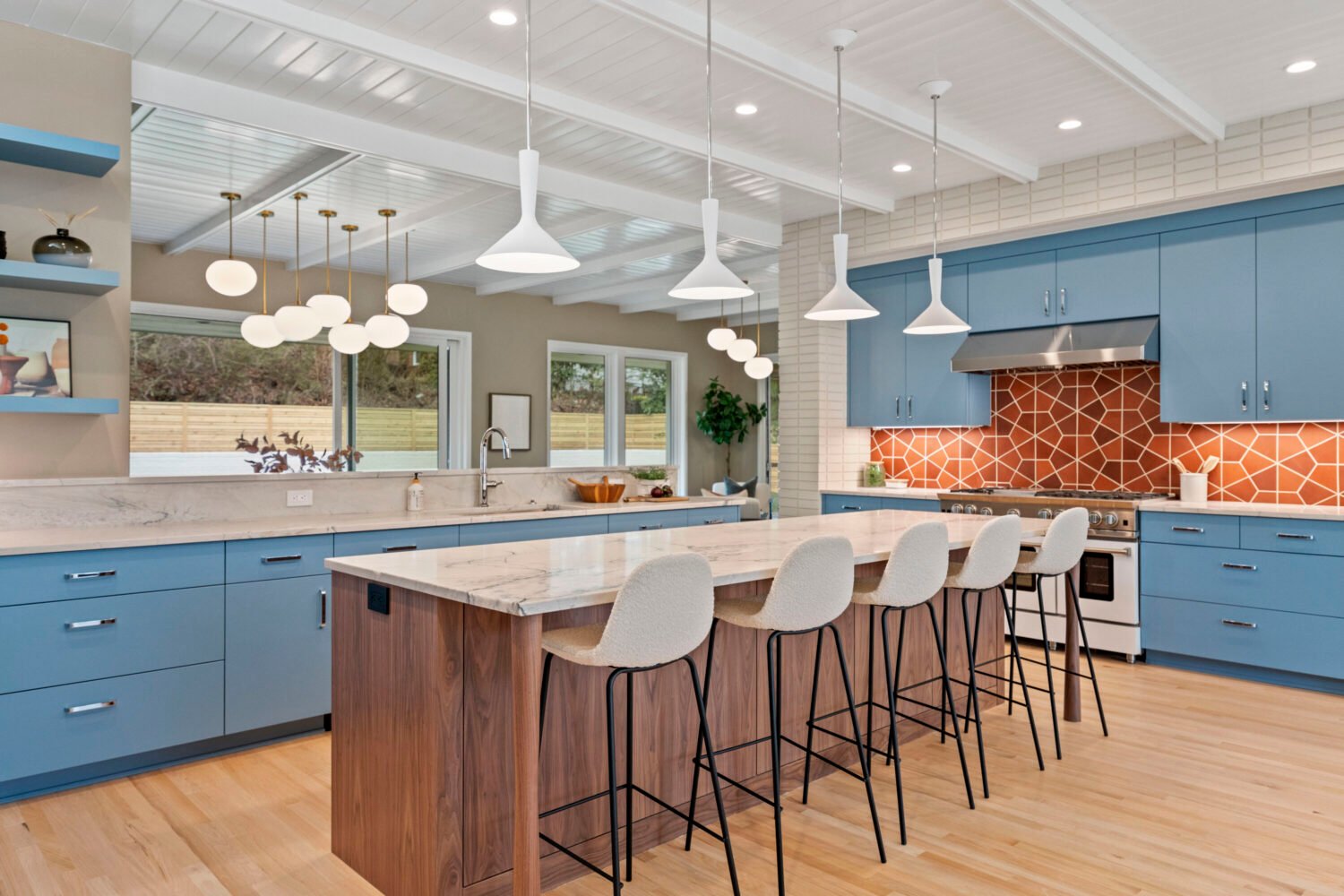We’ve said it before and we’ll say it again: We
were stunned by the transformation of the DC Design
House,
from an elegant but dated manse to a chic, modern oasis of
luxury.
One of the more prominent changes came in the form of
the standout light fixtures we spotted throughout the house. The home’s
ample natural light was one of its best qualities, but the
artificial light sources needed an update. The designers agreed
that the gilded crystal chandeliers that abounded in the
“before” space, while refined, were too heavy for their tastes and
needed to be freshened up.
We recently caught up with five of the designers behind our favorite eye-catching lighting fixtures to find out what vibe
they wanted to achieve and how you can incorporate the look into your home.
Dan Proctor of Kirk Designs: The Living Room
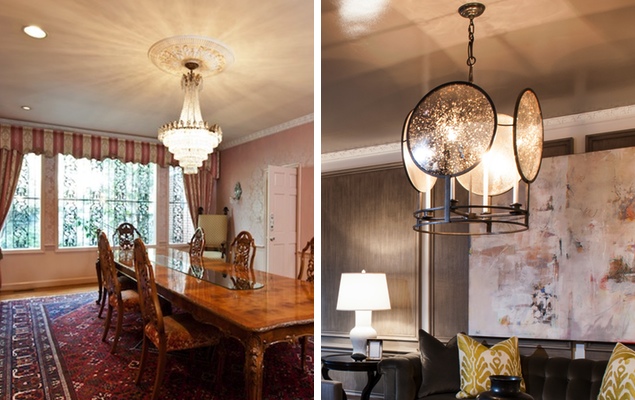
Previously used as a dining room, the space was laid out in a way that presented a challenge for Dan Proctor as he considered
lighting.
“The lighting needed to be reorganized, as it no longer matched. Recessed lights in the ceiling, for example, were tied to
items that no longer existed, so they served no purpose,” he explains.
Proctor used a McLain Wiesand lantern made of iron and distressed
convex mirrors to give placement
to the space, leaving no doubt as to the focus of the room.
“The room definitely has an industrial chic quality. It feels
urban, but with a sense of refinement,” he says.
Proctor’s tips: To get a similar look in your
home, consider multiple light sources. He added not just the statement
lantern, but also an
apothecary floor lamp, sconces, ceramic lamps, large floor
lamps, and a series of recessed fixtures in the ceiling.”Multiple
light sources are key in living rooms. Try using lamps for task
lighting, recessed perimeter lights to add ambient lighting,
and larger fixtures (chandeliers or lanterns) for decorative
lighting.”
Nadia Subaran of Aidan Design: The Kitchen
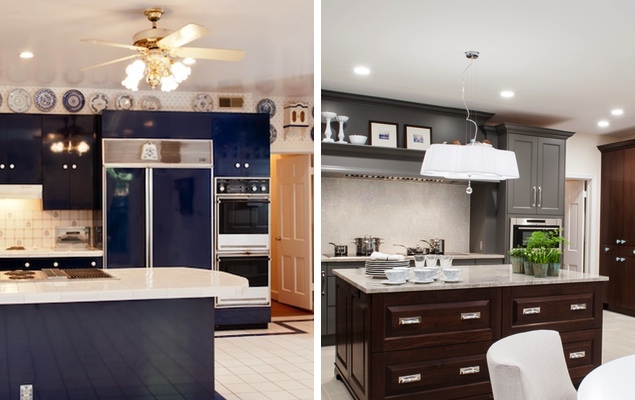
Going into the project, the first thing Nadia Subaran noticed was the imbalance of lighting in the kitchen, due to an addition
made in the ’80s.
“I wanted to make sure the kitchen lighting was
balanced, and that each section of the space was getting the proper
lighting,”
she says. “I also tried to work with what was existing, so we
updated the recessed lighting and added new lights in the skylights
to give a better spread, rather than pinpoints.”
A pendant by Vintage was flown in from Italy to replace the antiquated ceiling fan, and to provide better lighting on the
countertops.
“Like the rest of the kitchen, I think the lighting now has the warmth of a traditional feel, with modern sensibilities. It
has a streamlined sophisticated feel, with a bit of added ‘bling’ from the hanging crystal on the pendant,” she says.
Subaran’s tips: When shopping for kitchen
lighting, be sure to define the purpose of your lights to ensure that
you are purchasing sensible
lighting. “First of all, kitchen lighting should always be on
dimmers. Make that a priority. And definitely consider the functionality
of your lights. Are the materials conducive to kitchen
application? For example, you can add a diffuser to your bulbs to
eliminate
glare,” she says.
John Matthew Moore of John Matthew Moore Fine Art and Home: The Foyer
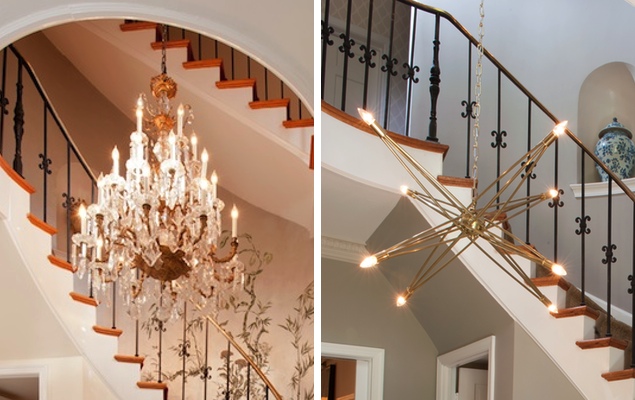
When John Matthew Moore saw the unchanged-in-decades wallpaper and lighting of his foyer space, he knew it was time to freshen
things up.
“Since the house was built in the 1950s, I wanted to pay homage to that period and use lighting that had a midcentury feel,
but that had been updated,” he says. “It needed to be a fixture that would blend us into an elegant, intimate space.”
Moore had fallen in love with a sculpture at last year’s Design House that he knew he wanted to turn into a chandelier. With
the help of lighting designer
Rick Singleton, he was able to
create a showstopping custom piece to greet guests
as they walk into the foyer. “I think the fixture brings
modernity to the foyer without being heavy or ostentatious,” he says.
Moore’s tips: Foyer lighting is where you can
really have some fun, says Moore, so think outside the box when you shop
for light fixtures
for it: “A foyer sets the tone for the whole house, so don’t be
afraid to do something a little whimsical in this room. Unexpected
lighting makes your foyer that much more interesting.”
Tricia Huntley of Huntley & Co. Interior Design: The Master Sitting Room
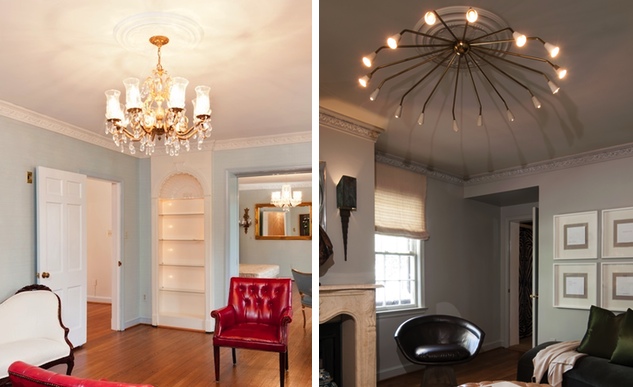
Tricia Huntley could imagine sitting perfectly straight, sipping tea in the room she was to design for the DC Design House,
but she didn’t see it as a space for lounging. She knew she could change that.
“Before, everything in the room was too matchy-matchy,
and I really wanted to shake that up using more hip lighting,” she
says. “I wanted the room to feel like the people who spent time
in here have lived life, and have seen things along the way.”
By adding the vintage Stilnovo spider fixture in the
ceiling alongside vintage sconces from Darrell Dean,
Huntley was able to create a space with a laid-back chic feel
sure to inspire envy.
“Now the sitting room has a loungey, sexy vibe. It is much less rigid and formal. It accommodates people who appreciate a
lot of design eras and have a sense of style about themselves,” she says.
Huntley’s tips: Even if you don’t have the
luxury of enjoying a master sitting room, you can still nail the sultry
vibe by ensuring your lighting
makes optimal use of the limited space.
“In small spaces, you want to make the most of what
you have, so don’t use any lighting that will cut off seating options.
Hanging pendants in the middle of the room, for example,
eliminate options and force you to design the seating around your
lighting. Instead, try fixtures that are close to the ceiling
and can be worked around any seating plans,” she suggests.
Shazalynn Cavin-Winfrey of SCW Interiors: The Dining Room
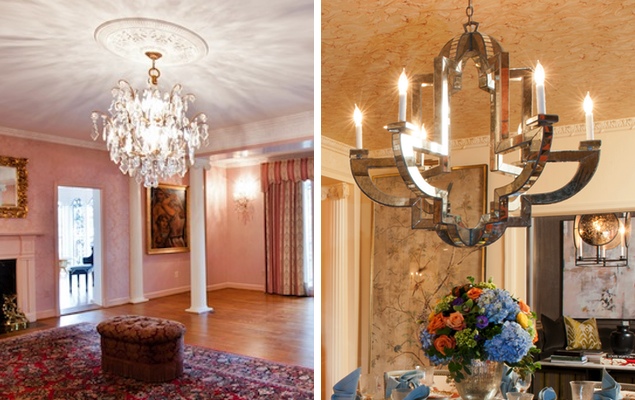
The “before space” was a little somber for Shazalynn Cavin-Winfrey’s taste, and she felt the lighting wasn’t being used to
define the purposes of the room.
“The dining room was definitely a dark space from the 50s, so I set out to give the space a warmer glow, and punctuate areas
in the room used for different needs,” she says.
A mirrored Neirmann Weeks chandelier now hangs above the dining
room table as the focal point
of the space, and the wall sconces help to further delineate
the use of space as reading lights for the corners of the room.
“There is more of an eclectic vibe now, and the mirrored chandelier helps to move the light around. It is streamlined, as
opposed to being overdone.”
Cavin-Winfrey’s tips: Similar to living room lighting, dining rooms require several layers of lighting, each with a specific purpose.
“For dining rooms, use as many different sources of
lighting as possible. Branch out from just lamps or just chandeliers,
and marry all types of lighting in the space. Also,consider
using wall-washer lights to highlight the most important or dramatic
piece in the room to create a focal point.”

